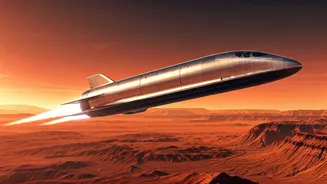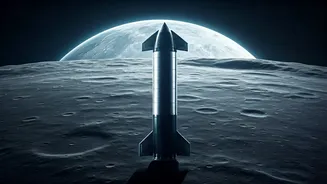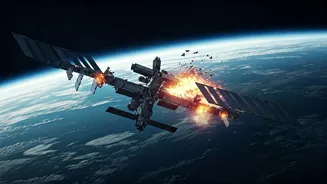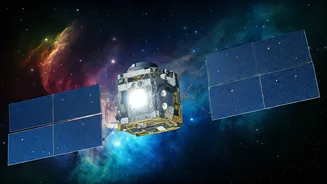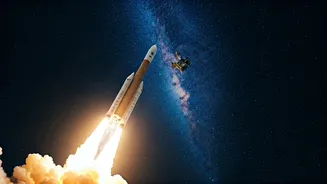Mars Mission Timeline
Elon Musk revealed the timeline for Starship's Mars mission: the goal is to send the spacecraft, which will also contain a Tesla bot, to Mars by the end of
2026. This announcement highlights the aggressive schedule SpaceX is maintaining in its mission to make interplanetary travel a reality. The 2026 target is a key milestone in the long-term goal of establishing a self-sustaining human settlement on Mars. This mission demonstrates the company's commitment to pushing the boundaries of space exploration and establishing a permanent human presence on another planet. The launch itself would be a landmark moment, potentially opening new opportunities for scientific research, resource utilization, and the expansion of human civilization beyond Earth.
Starship: Key Details
The Starship is a fully reusable spacecraft and launch system being developed by SpaceX. It is designed to transport both cargo and passengers on long-duration spaceflights, including missions to the Moon and Mars. The Starship is composed of two primary elements: the Starship spacecraft itself, and the Super Heavy rocket booster. The Super Heavy booster is intended to provide the necessary thrust for the Starship to reach orbit. Both elements are designed to be fully reusable, allowing for more cost-effective space travel. The Starship is powered by SpaceX's Raptor engines, which are designed to use liquid methane and liquid oxygen as propellant. This choice of propellant is significant, as it could potentially be produced on Mars, making long-term sustainability more feasible. The size and capacity of the Starship are also notable. It is designed to carry a large payload, which is crucial for establishing a permanent base on Mars.
Tesla Bot's Role
The inclusion of a Tesla bot in the Starship's mission to Mars adds an intriguing element to the project. While the specific functions of the bot are not fully detailed, its presence suggests a role in assisting human explorers on the Red Planet. The Tesla bot could be employed to carry out various tasks, from collecting samples and conducting experiments to maintaining infrastructure and helping with resource utilization. This initiative reflects the growing integration of robotics and automation in space exploration, potentially easing the workload for human astronauts. The use of advanced technology, such as the Tesla bot, could improve the efficiency of missions and make the establishment of a Martian colony more realistic. The precise capabilities and roles of the Tesla bot will be important as the mission progresses.
Implications and Challenges
The Starship's mission to Mars by 2026 presents several implications and challenges. The aggressive timeline implies rapid technological progress and efficient execution by SpaceX. The success of this mission could transform space exploration by drastically reducing the cost of travel and expanding the scope of human endeavors beyond Earth. Challenges, however, include the complexities of interplanetary travel, such as navigating the hazards of deep space, shielding astronauts from radiation, and ensuring the spacecraft's reliability. Moreover, the mission's success requires addressing logistical concerns, like in-situ resource utilization, and providing life support for extended missions. The outcome of the Mars mission will depend on several factors, including funding, governmental support, and technological developments. This mission could be a pivotal step in humanity's endeavor to become a multi-planetary species.
